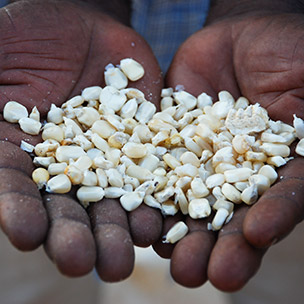January 16, 2015 — In the late 1900s, as per-acre grain yields moved to 3 metric tons per hectare in South and Southeast Asia and Latin America, 5 metric tons per hectare in China, and 10 metric tons per hectare in North America, Europe and Japan, there’s one place where production stagnated big time: sub-Saharan Africa, where loss of soil fertility on small farms trapped grain production at an unsustainable 1 metric tons per hectare. With population growing, that earned the region the dubious distinction of being the one part of the world where food production per capita is falling.
Writing in the scientific journal Nature Plants, Pedro Sanchez, Director of the Agriculture and Food Security Center at Columbia University’s Earth Institute, says that stark picture is starting to shift, thanks to a wave of political, social and economic reform sweeping the continent.
Democracy and foreign investment are on the rise, Sanchez reports, as are education, life expectancy and income. Crop yields, too, are starting to grow in some places, thanks to “seeds of change” planted by governments, non-governmental organizations and private sector interests working to achieve the United Nations’ Millennium Development Goals for 2015. In fact, Sanchez suggests, with continued advances in four key food production domains — inputs and financing, production practices, processing and storage, and markets and institutions — “sub-Saharan Africa could become one of the world’s breadbaskets by 2050.” ![]()
Photo by Anne Wangalachi/CIMMYT (Flickr | Creative Commons)
Ensia shares solutions-focused stories free of charge through our online magazine and partner media. That means audiences around the world have ready access to stories that can — and do — help them shape a better future. If you value our work, please show your support today.
Yes, I'll support Ensia!
